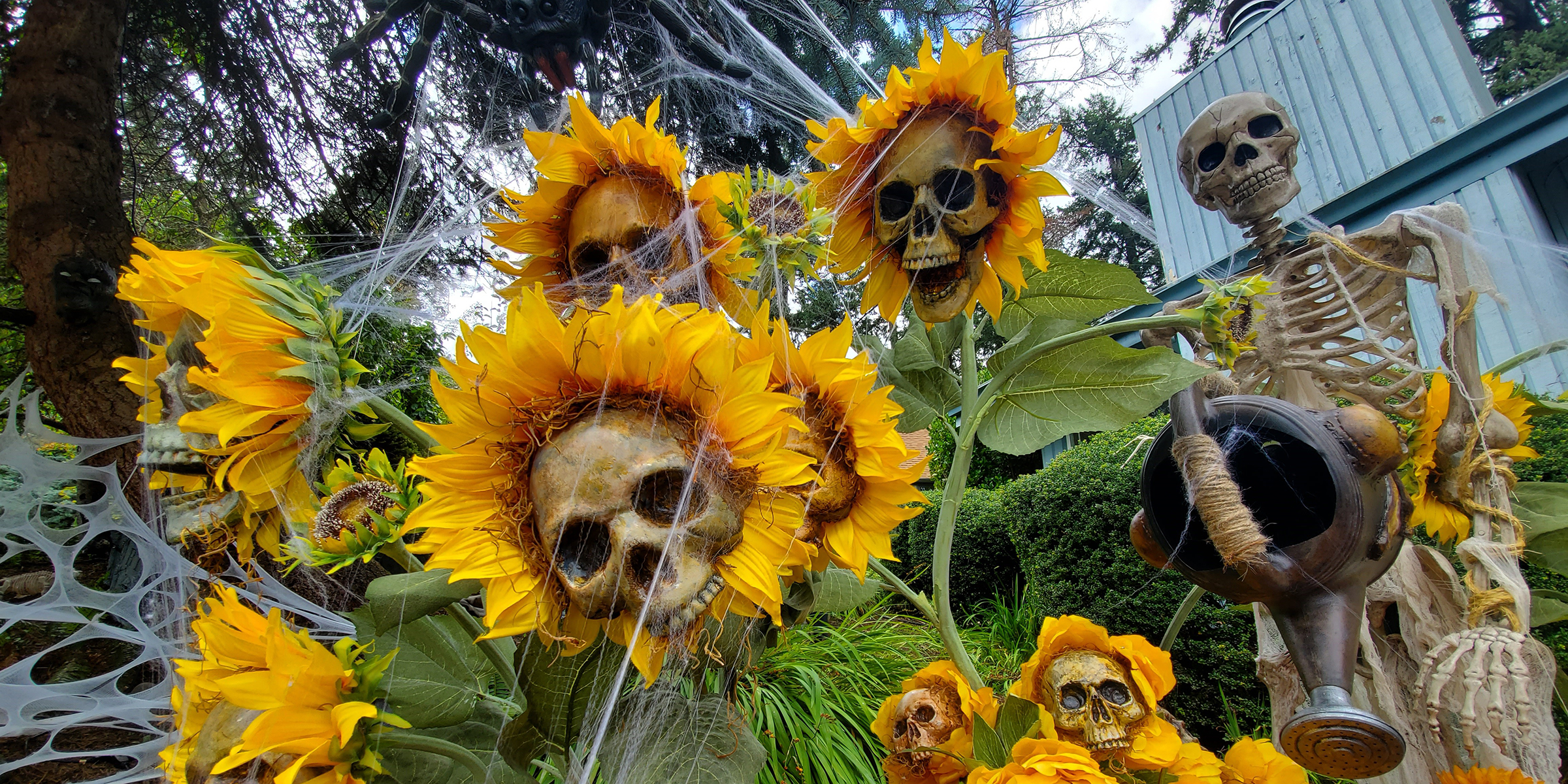Get ready to add a spooky twist to your Halloween decorations with the most creepy flowers you’ve ever seen! These hauntingly beautiful blooms are sure to bring an eerie ambiance to your haunted house or costume party. From the menacing Black Bat Flower to the chilling Bleeding Tooth Fungus, this article will introduce you to a selection of truly hair-raising flowers that will give your Halloween celebrations a wickedly unforgettable touch. Get ready to be bewitched by the dark allure of these spine-chilling plants!
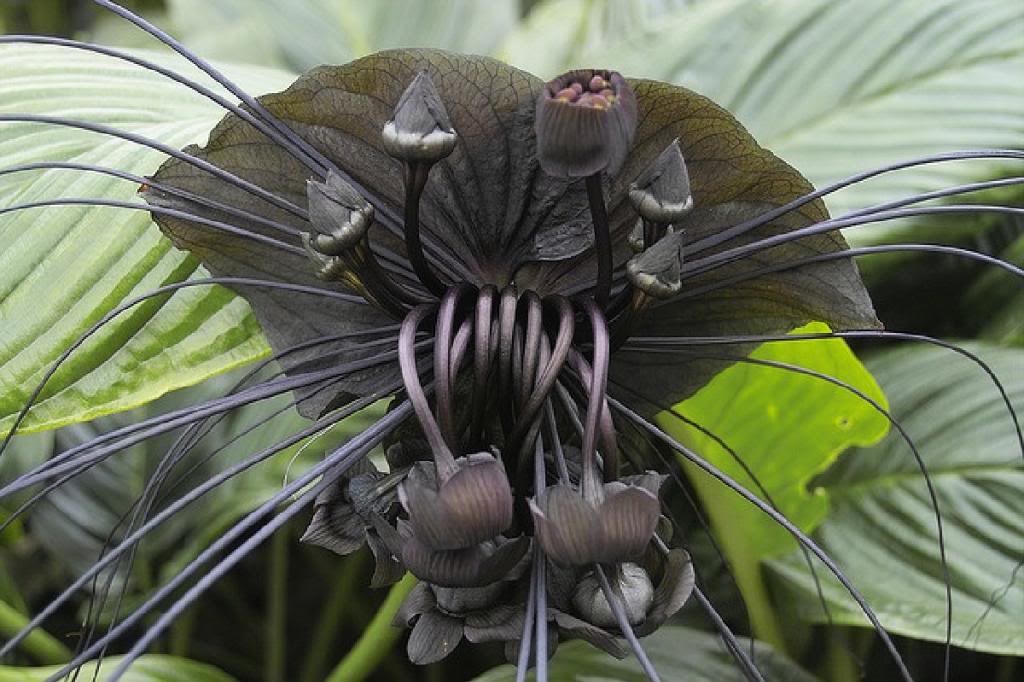
This image is property of assets.website-files.com.
1. Bleeding Heart
1.1 Description
The Bleeding Heart, also known by its scientific name Dicentra spectabilis, is a beautiful and unique flower that is often associated with love and compassion. Its name comes from its peculiar shape, which resembles a heart with a droplet of blood falling from the bottom. The flower itself consists of a cluster of pink or white petals, forming a heart-shaped outline, with an inner petal that hangs down like a tear. Its delicate appearance and vibrant color make it a popular choice for gardens and floral arrangements.
1.2 Symbolism
The Bleeding Heart holds deep symbolism, primarily associated with love, empathy, and emotional healing. It is often considered a representation of a broken heart or unrequited love. The droplet of “blood” hanging from the heart-shaped petal is believed to symbolize the pain and sadness experienced in love. However, the Bleeding Heart also holds a positive connotation of compassion and understanding, reminding us to approach relationships and emotions with empathy and tenderness.
1.3 Creepy Factor
While the Bleeding Heart may not be inherently creepy, its association with themes of heartbreak and sorrow can give it an eerie aura, especially during Halloween. Its drooping tear-like petal and the blood-red color of some varieties add to its mysterious and haunting appearance. When paired with other dark and spooky decorations, the Bleeding Heart can contribute to a chilling ambiance during Halloween festivities.
2. Devil’s Claw
2.1 Description
The Devil’s Claw, scientifically known as Proboscidea louisianica, is a striking flower that is native to the American Southwest and Mexico. It derives its name from its unique seed pods, which resemble a twisted claw or horn. The vibrant, trumpet-shaped flowers of the Devil’s Claw come in shades of yellow, orange, and red. Its stunning appearance and unusual seed pods make it a captivating addition to any garden or Halloween display.
2.2 Symbolism
The Devil’s Claw carries various symbolic meanings, including strength, protection, and resilience. Its unusual seed pods are often associated with the concept of breaking free from constraints and asserting one’s independence. The flowers themselves can represent passion, energy, and a fiery spirit. In folklore and mythology, the Devil’s Claw is sometimes linked to otherworldly beings and supernatural powers, further enhancing its mysterious symbolism.
2.3 Creepy Factor
With its name and distinctive seed pods, the Devil’s Claw exudes a spooky aura that is perfect for Halloween. The twisted and claw-like appearance of its pods can be reminiscent of demonic creatures or witch’s talons. Placed in eerie arrangements or combined with other dark elements, the Devil’s Claw can add a touch of enchantment and macabre fascination to Halloween decor.
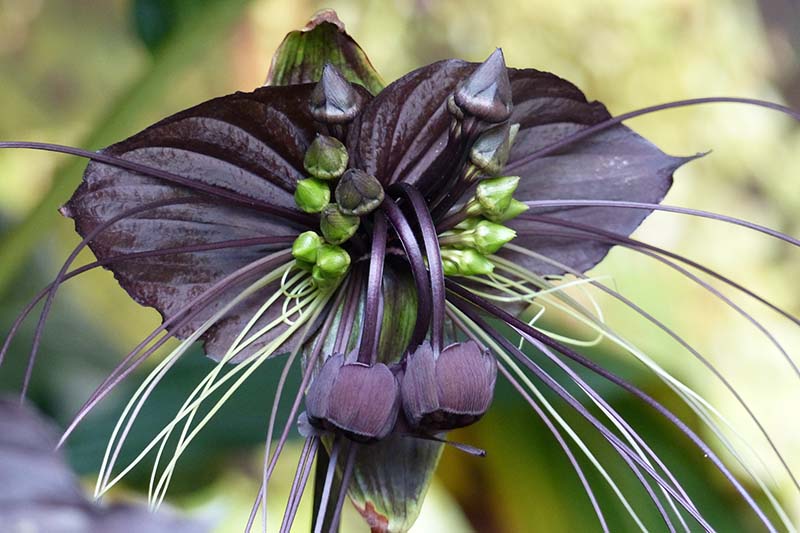
This image is property of gardenerspath.com.
3. Black Bat Flower
3.1 Description
The Black Bat Flower, scientifically known as Tacca chantrieri, is an exotic and visually captivating flower that hails from Southeast Asia. It gets its name from its unique shape and coloration, resembling the wings of a bat in flight. The flower consists of intricate dark purple or black petals that spread out like bat wings, with long tentacle-like filaments that dangle below. Its mysterious appearance and dramatic beauty make it a popular choice for those seeking an unconventional and eerie floral display.
3.2 Symbolism
The Black Bat Flower holds symbolism associated with mystery, darkness, and the supernatural. Its resemblance to a bat, a creature often associated with Halloween and folklore creatures like vampires, adds to its enigmatic symbolism. The flower’s rich and dark coloration is often linked to transformation, rebirth, and the hidden depths of the subconscious mind. In some cultures, it is believed to possess protective and warding properties against evil spirits.
3.3 Creepy Factor
The Black Bat Flower is undeniably creepy in appearance, making it a perfect addition to any Halloween-themed setting. Its ominous and bat-like shape, combined with its dark coloration, lends itself well to spooky and macabre arrangements. Whether used as a centerpiece or accompanied by other eerie elements, the Black Bat Flower can create an atmosphere of mystery and intrigue, adding an extra touch of creepiness to Halloween festivities.
4. Corpse Lily
4.1 Description
The Corpse Lily, also known as Rafflesia arnoldii, is a rare and peculiar flower that is infamous for its repulsive smell. It can be found in the rainforests of Southeast Asia and is known to possess the largest individual flower of any plant. The Corpse Lily has large, fleshy petals that are maroon or brown in color, and its center produces a horrific odor that resembles rotting flesh. Despite its unpleasant smell, the Corpse Lily has a certain allure due to its unique nature.
4.2 Symbolism
The Corpse Lily has symbolic associations with death, decay, and the cycle of life. Its putrid scent, which attracts flies and other insects, allows the flower to fulfill its role as a pollinator despite its lack of colorful petals. The flower’s brief blooming period, followed by its rapid decay, serves as a reminder of the transient nature of life and the inevitable process of decomposition. In some cultures, the Corpse Lily is also believed to have connections to the afterlife and otherworldly realms.
4.3 Creepy Factor
The Corpse Lily is undeniably unsettling due to its foul odor and grotesque appearance. Its resemblance to decaying flesh and association with death make it a favorite choice for Halloween enthusiasts aiming to create a spine-chilling atmosphere. The Corpse Lily’s presence can elicit a mixture of fascination and repulsion, making it a perfect addition to Halloween-themed displays or haunted gardens.
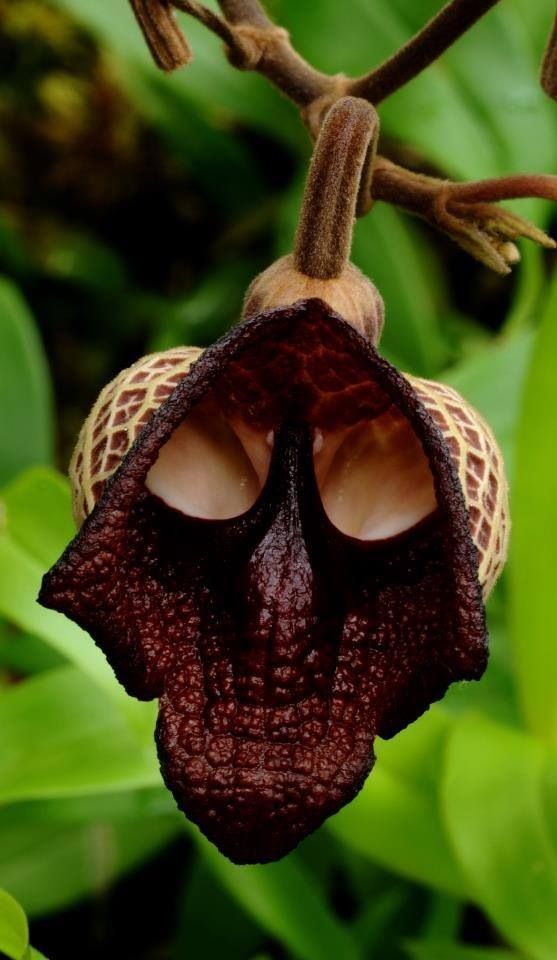
This image is property of assets.website-files.com.
5. Dead Man’s Fingers
5.1 Description
Dead Man’s Fingers, scientifically known as Xylaria polymorpha, is a type of fungus that earned its name due to its striking resemblance to human fingers or skeletal remains. It is typically found growing on decaying wood, such as fallen logs or tree stumps. The fungus consists of elongated, finger-like structures that are black or dark brown in color. Its appearance, reminiscent of death and decay, can give an eerie and unsettling impression.
5.2 Symbolism
Dead Man’s Fingers carries symbolic meanings related to mortality, transience, and the cycle of life. Its growth on decaying wood is a reminder of the natural process of decomposition and the eventual return of all living beings to the earth. The finger-like structures also evoke a sense of skeletal remains, connecting the fungus to themes of death and the passage of time.
5.3 Creepy Factor
The sight of Dead Man’s Fingers growing on decaying wood can be quite chilling, especially when encountered unexpectedly. Its resemblance to skeletal remains or severed fingers adds a macabre element to its overall appearance. Incorporating Dead Man’s Fingers into Halloween decorations or arrangements can contribute to a spooky and haunted ambiance that will give anyone a shiver down their spine.
6. Doll’s Eyes
6.1 Description
Doll’s Eyes, scientifically known as Actaea pachypoda, is a perennial flowering plant that possesses unique and eerie features. This plant is known for its distinctive white berries with a prominent black spot on each, resembling the eyes of a porcelain doll. The plant itself has feathery green leaves and small white flowers that bloom in clusters. The Doll’s Eyes plant is native to North America and is often found in woodland areas.
6.2 Symbolism
The Doll’s Eyes plant holds symbolic associations with innocence and playfulness, but it also carries an eerie undertone due to its name and appearance. The black spots on the white berries resemble the vacant stare of a doll’s eyes, which can evoke a sense of horror or unease. This contrast between innocence and creepiness makes the Doll’s Eyes plant an intriguing and eye-catching choice for Halloween-themed decor.
6.3 Creepy Factor
The Doll’s Eyes plant is naturally creepy in its appearance, making it a perfect addition to any Halloween-themed setting. The eerie resemblance between its white berries and the vacant stare of a doll’s eyes can give chills to anyone who gazes upon it. Whether utilized in floral arrangements, planted in a garden, or integrated into spooky displays, the Doll’s Eyes plant is guaranteed to send shivers down your spine during Halloween festivities.
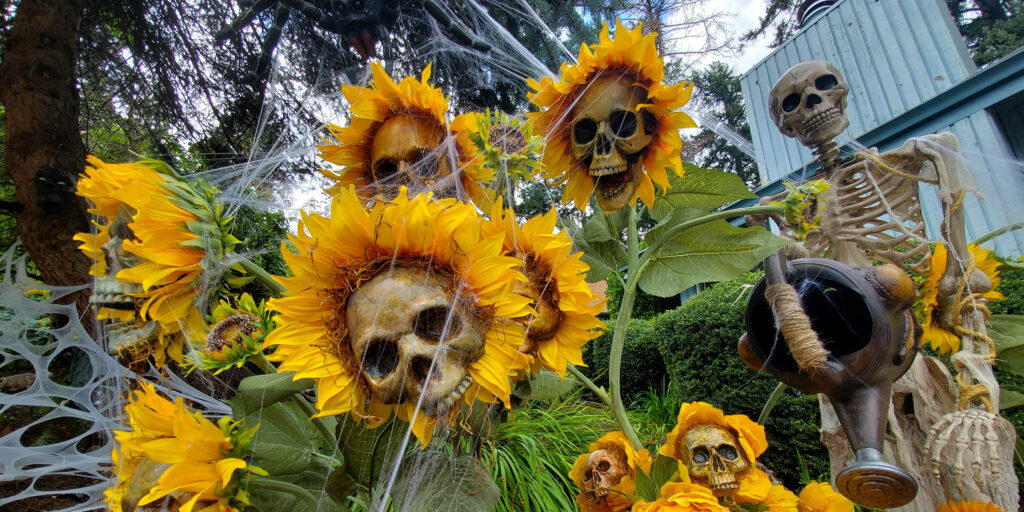
This image is property of media-cldnry.s-nbcnews.com.
7. Jack-in-the-Pulpit
7.1 Description
Jack-in-the-Pulpit, scientifically known as Arisaema triphyllum, is a fascinating perennial plant that is native to eastern North America. It is named after its unique flower structure, which resembles a preacher in a pulpit. The plant produces a tall, erect stalk with a hooded spathe that surrounds a spiky rod, known as the “Jack”. The spathe can vary in color, ranging from green to purple, while the Jack is usually a vibrant yellow color. Its distinctive shape and color make it a captivating addition to any garden or Halloween-themed setting.
7.2 Symbolism
Jack-in-the-Pulpit holds symbolic associations with spirituality, transformation, and rebirth. The plant’s flower structure, with the Jack standing above the hooded spathe, is seen as representative of a spiritual figure delivering wisdom or messages. The spathe itself is regarded as a protective covering, emphasizing themes of shelter, introspection, and personal growth. Additionally, the Jack-in-the-Pulpit’s ability to change its gender from year to year adds to its symbolic importance, representing the fluidity and transformative nature of life.
7.3 Creepy Factor
While Jack-in-the-Pulpit may not be inherently creepy, its intriguing structure and unique appearance can add a mysterious touch to Halloween-themed decorations. The hooded spathe can be reminiscent of a cloaked figure or an otherworldly being, while the spiky Jack resembles a strange, extraterrestrial object. Incorporating Jack-in-the-Pulpit into a Halloween display can create an atmosphere of intrigue and enigma.
8. Skunk Cabbage
8.1 Description
Skunk Cabbage, scientifically known as Symplocarpus foetidus, is a perennial plant that is native to eastern North America. It gets its name from the pungent odor it emits, which resembles that of a skunk. The plant produces large, heart-shaped leaves and unique flower clusters that are tightly packed together, resembling a cabbage. Skunk Cabbage is often found in wetland areas and damp forest floors, where it thrives in the nutrient-rich soil.
8.2 Symbolism
Skunk Cabbage holds symbolic associations with strength, protection, and resilience. Despite its foul odor, the plant can generate heat, allowing it to bloom even in cold temperatures and inhospitable conditions. Its ability to thrive in wetlands underscores its symbolism of adaptation and perseverance. In some cultures, Skunk Cabbage is believed to possess protective qualities, warding off evil spirits or negative energy.
8.3 Creepy Factor
The distinctive odor emitted by Skunk Cabbage can give off a spooky and repulsive vibe, fitting well into Halloween-themed settings. Its connection to the foul scent of a skunk can create an eerie ambiance when included in floral arrangements or displayed in a haunted garden. Skunk Cabbage adds a touch of intrigue and uniqueness to any Halloween decor, making the atmosphere just a little bit spookier.

This image is property of hortnews.extension.iastate.edu.
9. Voodoo Lily
9.1 Description
The Voodoo Lily, scientifically known as Dracunculus vulgaris, is a fascinating and unusual plant native to the Balkans and western Turkey. It is notorious for its striking appearance and its putrid odor, reminiscent of rotting meat. The Voodoo Lily features a tall, dark-purple spadix, covered in small, needle-like protrusions, and a large, maroon spathe that encloses it. Despite its repulsive smell, the Voodoo Lily has gained popularity among enthusiasts and collectors of curious and exotic plants.
9.2 Symbolism
The Voodoo Lily carries symbolic associations with mystery, spirituality, and transformation. Its dark and unconventional appearance has led to its association with occult practices and mystical traditions. The plant’s foul odor, similar to rotting flesh, has a strong connection with themes of death and rebirth. The Voodoo Lily’s blooming process, characterized by the unfurling of its spathe, can be interpreted as a representation of inner transformation and the unveiling of hidden aspects of the self.
9.3 Creepy Factor
The Voodoo Lily’s repugnant odor, combined with its bizarre and unsettling appearance, undeniably adds a creepy factor to any Halloween-inspired setting. The plant’s association with occult practices and its connection to death and transformation can contribute to an atmosphere of mystique and unease. Including the Voodoo Lily in Halloween decor or setting up a display inspired by witchcraft and supernatural elements can enhance the overall spooky ambiance.
10. White Baneberry
10.1 Description
White Baneberry, scientifically known as Actaea pachypoda, is a herbaceous perennial plant that is native to North America. It is also referred to as “Doll’s Eyes” due to its distinctively shaped white berries with black spots. The plant produces delicate white flowers in clusters above its foliage, which consists of lobed and toothed leaves. Although visually appealing, the white berries of the White Baneberry are highly toxic when ingested, and caution should be exercised around them.
10.2 Symbolism
White Baneberry carries symbolic associations with both innocence and danger. Its berries, resembling the eyes of a doll, can evoke an eerie and unsettling feeling. While its delicate white flowers can represent purity and fragility, the toxicity of the plant’s berries acts as a reminder of the potential dangers lurking beneath a seemingly innocent appearance. This duality of symbolism adds a sense of mystery and darkness to the White Baneberry.
10.3 Creepy Factor
The White Baneberry’s designation as “Doll’s Eyes” and the toxicity of its berries give it a naturally creepy aura, perfect for Halloween-themed decorations. The contrast between its innocent-looking white berries and the danger they present can create a chilling effect when incorporated into displays or arrangements. Whether placed alongside other sinister elements or used as standalone decor, the White Baneberry is sure to send shivers down your spine.

